Chabówka 2023-08-06
Saloon car type Ashx 07.
Saloon car Ashx 07. 1958. PaFaWag Wroclaw factory. The Ashx 07 type lounge car is in the collection of the railway museum in Chabowka. The wagon was produced in the PaFaWag factory in Wrocław in 1958.
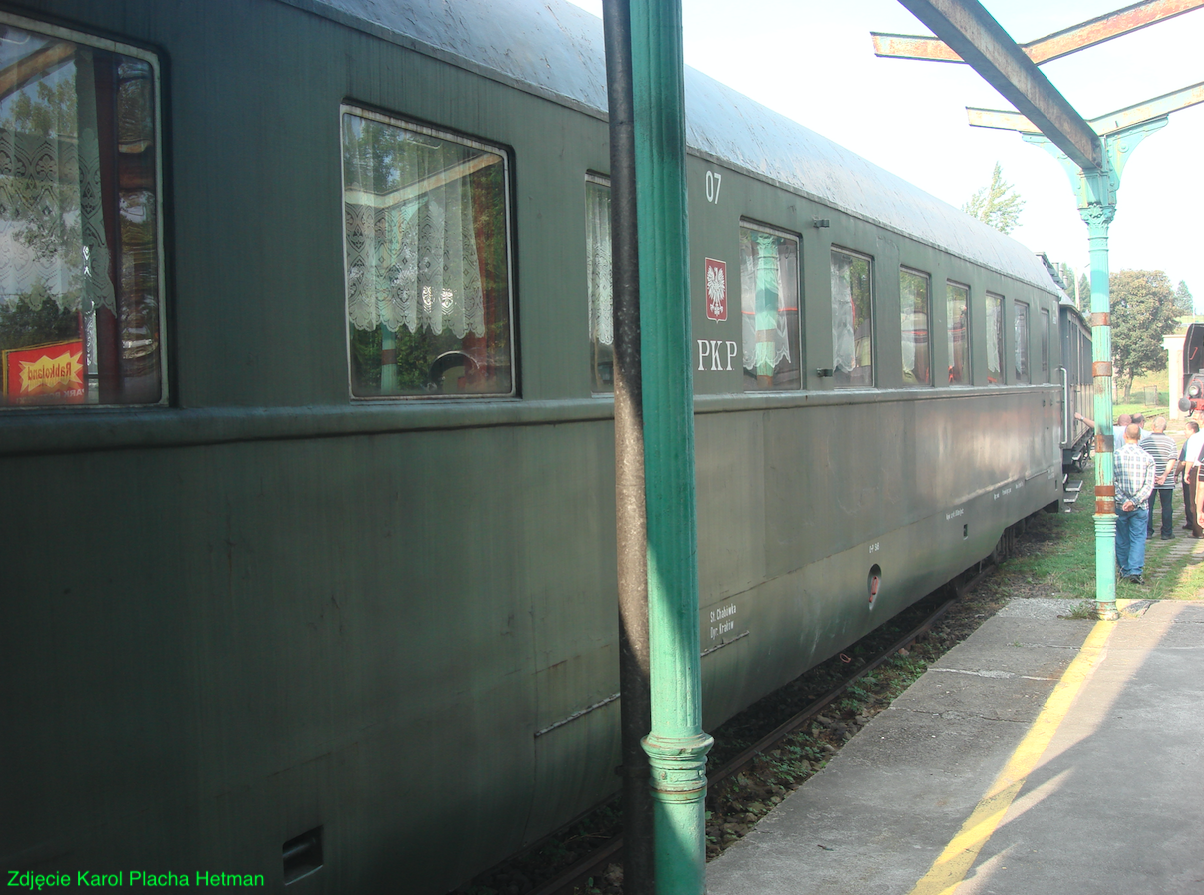
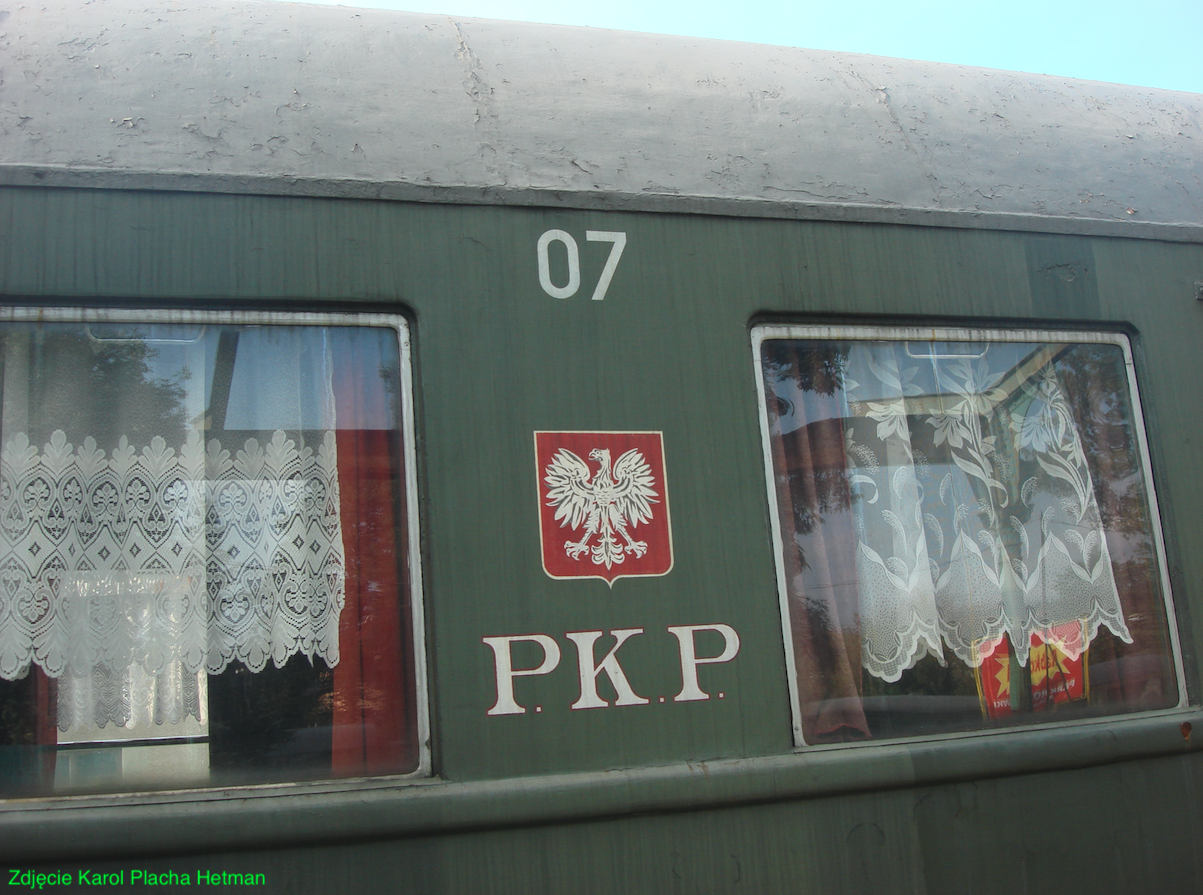
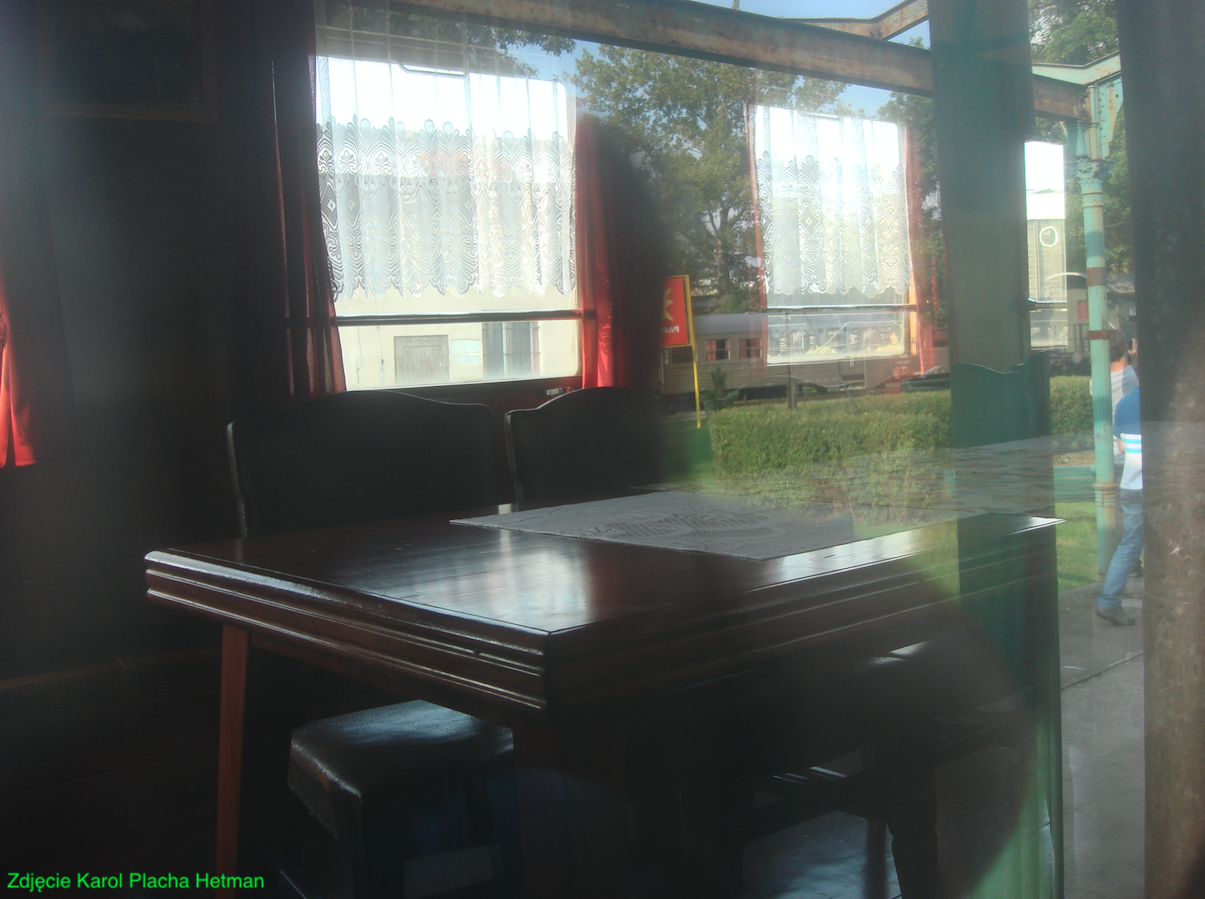
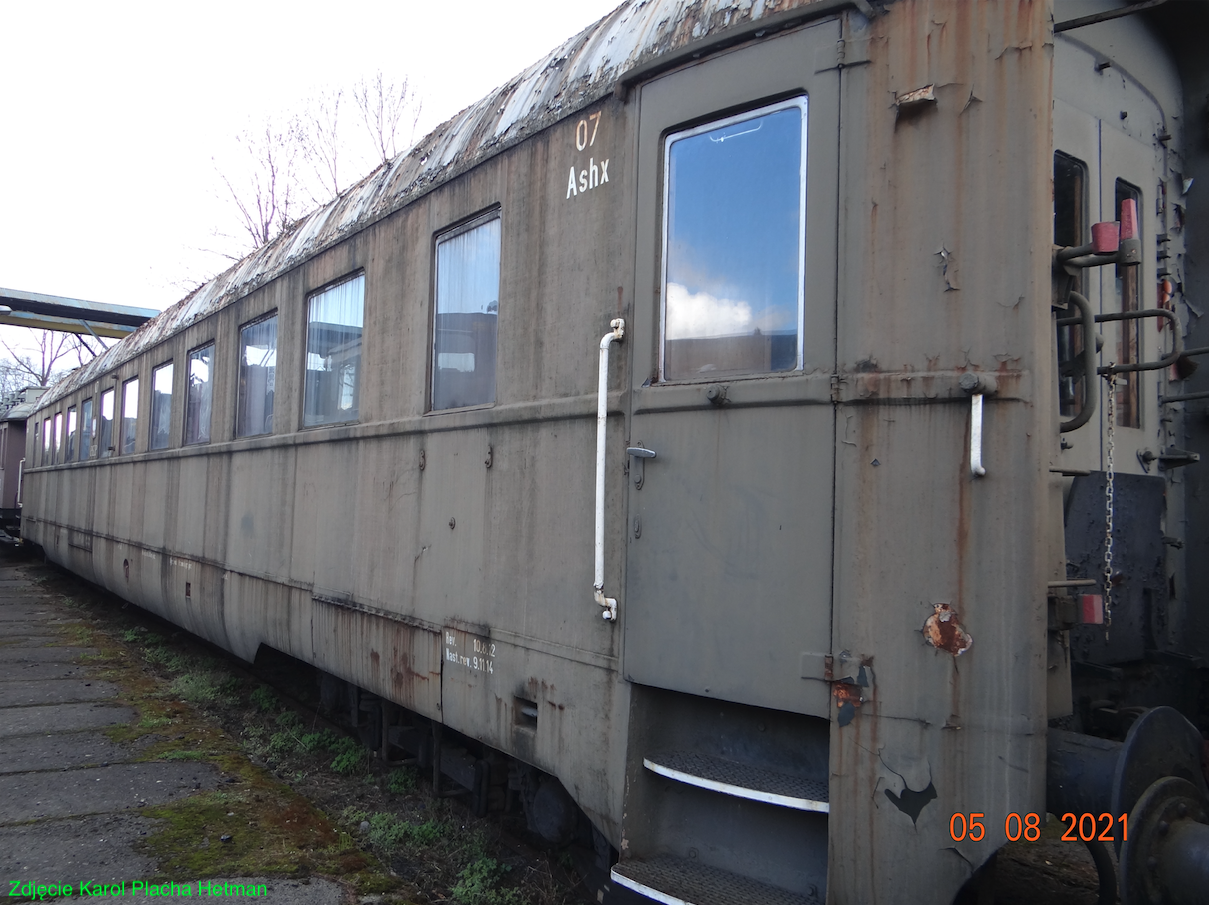
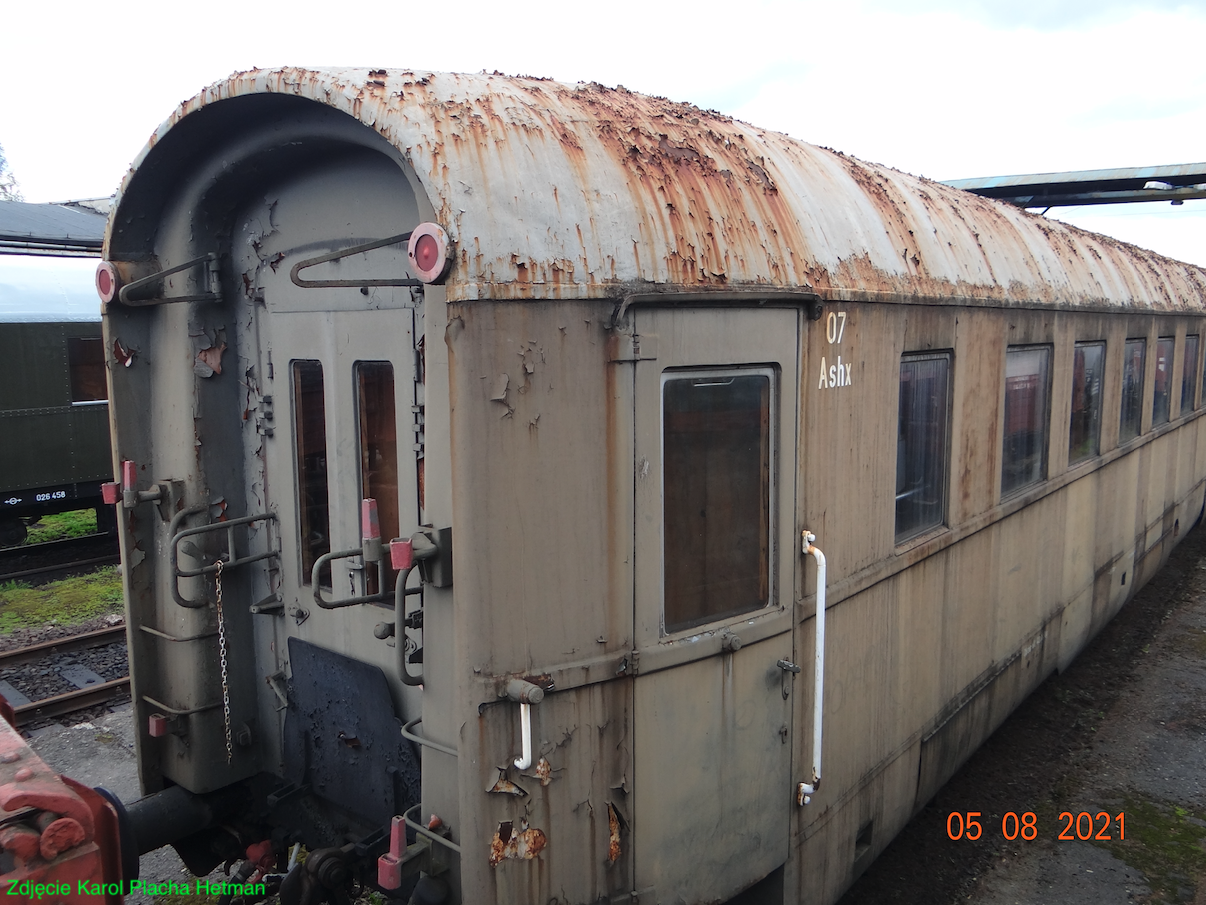
Saloon cars are classified as special purpose cars. In Poland, they were intended for VIP transport, i.e. the most important people in the country - government institutions and PKP officials. Saloon cars were built mainly on the basis of sleeping cars. Because sleeping cars provided the best comfort; good running system, thermal and acoustic insulation. Saloon cars have: bedrooms, lounges, offices, dining rooms, kitchens and bathrooms. Commonly, such wagons are called lounges, as are planes intended for VIP transport.
In 1939, in the HCP factory in Poznań, they carried out an order for 6 sleeping cars for the International Society of Sleeping Cars and Great European Expresses (CIWL). However, by the outbreak of World War II, none of the carriages had been handed over to the user, and two carriages had not yet been completed. Four completed wagons were looted by the Germans. Two unfinished wagons, the Germans ordered to be completed as saloons for dignitaries. However, the wagons were not completed throughout the occupation. In February 1945, the wagons were still on the premises of the HCP plant.
In 1946, the production of saloon cars was resumed. They were marked as Asx, and from 1948, as Ashx. In 1981, the designation was changed to type XXo.
The Ashx 07 type car has 12 windows in the side wall and doors in the ends. The entrance door is equipped with opening windows. Below the car underframe there are covers that improve the air flow of the cars and aesthetics. For the passage to the next car, there are double-leaf doors in the fronts, which are opened manually. The platform is made of sheet metal and the passage is covered with a canvas tunnel that is foldable.
The Ashx 07 car is equipped with a conference room, a TV room, a kitchen with a fridge, a sink, and a gas cooker. The gas comes from the cylinder. On board there are three double sleeping compartments with washbasins. The interior has been finished with wood and high-quality textile materials. The windows have curtains and curtains. The wagon has an electrical installation with a voltage of 220 V AC, at that time such voltage was used for individual consumers in apartments. When stationary, the wagon can be connected to an external source of electricity. The wagon has electric heating (electric stoves) and steam. The steam came from a steam locomotive, a diesel locomotive with a heating boiler or a heating wagon.
T-T Ashx 07 Data:
Total length 23.40 m. The spacing of the turning pins is 16.00 m. Maximum speed 80 - 120 km/h. The carriage is designed for 6-20 people. There were 6 sleeping places on board. The curb weight of the wagon was 40,000 kg. Gross weight 57,000 kg. After the last renovation, the wagon was allowed to move until November 9, 2014.
Written by Karol Placha Hetman
